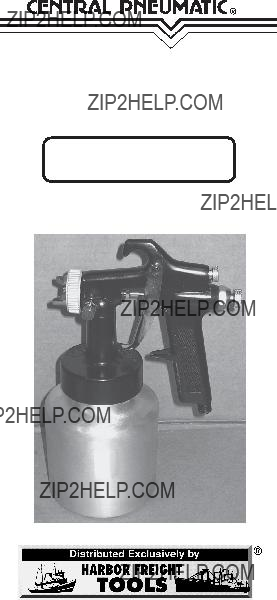The purpose of the solvent is to make the paint liquid so it can be applied. Once applied, the solvent evaporates, leaving the pigment and its binders in place. The solvent is also used as a clean up medium. Paint mixtures which are to be sprayed are generally less viscous (thinner) than mixtures which are to be applied with a brush. Thus you will most often have to add extra solvent to a paint which is to be sprayed.
When paint is sprayed, it is broken into tiny droplets, then blown by high- pressure air onto the surface. During this spraying process, the surface of each paint droplet will begin to dry. When it hits the work material, the droplet must liquefy again, and mix with the droplets hitting alongside it. Ideally, these droplets will mix evenly forming a smooth surface.
If the paint mixture is too thick, the droplets will not form a smooth layer, and the resulting surface can be described as ???pebbly??? or ???orange peel???. If the paint mixture is too thin, the paint will run, forming long drips before they are thick enough to form a satisfactory coat. Vertical surfaces are more prone to ???run??? than horizontal surfaces due to the effect of gravity.
Applying the Paint:
In most cases, it is best to move the paint spray from side to side, over- lapping the previous paint. In this way you will gradually build up the paint layer without leaving any obvious edges.
To paint in this way, the spray pattern should be set to vertical.
It is important to prevent excess paint at the beginning and end of each stroke. Holding the sprayer away from the work piece, squeeze the trigger to start the spray. Then move the spray gun in to within 14-16 inches of the work piece. Move the sprayer smoothly across the work piece, keeping a consistent distance. At the end of each stroke, pull the sprayer away from the work piece as you release the trigger.
As you work, carefully observe the way the paint accumulates on the work surface. It is more important to maintain a good paint surface than to form an opaque (thick) paint coat.You can always apply a second coat to get the coverage you want. If the surface is ruined, however, you will have to start over with surface preparation.
If the surface does not smooth out in a few seconds after applying the paint, your paint mixture is probably too thick. Thin your paint slightly and test on a piece of scrap material. If the paint goes on very thin and threatens to run, stop spraying immediately. Add more paint to your mixture to thicken the paint. Test on a piece of scrap material before resuming work.

 92841
92841
 Trigger (26)
Trigger (26) Paint Cup (35)
Paint Cup (35)

